How To Build a Small Rock Garden

Looking for rock garden ideas for small spaces? Adding a rock garden to your outdoor landscape can be a fun and creative way to bring new vibrance to your yard. Continue reading for rock garden ideas for small gardens or get in touch with New Life Rockeries to learn more about our rock garden installation capabilities. Small Rock Garden Ideas To Prevent Backyard Flooding One of the main reasons why Pacific Northwest homeowners have a rock garden installed is to prevent backyard flooding. If you are in search of small rock garden plants that will help mitigate your flooding issues or tips for how to make a small rock garden, continue reading. Small Rock Garden Design Ideas Here are five small rock garden designs that PNW homeowners love: Japanese rock garden (sometimes called a zen garden). These are some of the most simplistic and yet beautiful types of rock garden designs. They implement a natural and intense color palette of stony gray, maple red, and deep greens and browns. Cascading terrace rock garden. These are perfect outdoor additions to showcase your landscape centerpiece or simply add depth and texture to your outdoor space. Still pond and rock garden. Consider having a small koi fish pond in the center of your rock garden or a bubbly fountain to attract the eyes to a focal point. Succulent rock garden. Succulents are one of the best ways to create texture in a rock garden. You can blend rocks and succulents of varying sizes to create an earthy-toned, textured space. Painted rock garden. Rock gardens like this are artistic and should focus on bright plants with varying textures. If any of these small space rock garden ideas appeal to you, get in touch with New Life Rockeries today to speak with one of our landscaping contractor professionals about having a rock garden installed at your home. 3 Tips For How To Design a Small Rock Garden When it comes to tips for how to design a small rock garden, here are three simple things that you should consider before setting to work on your small rock garden. Consider how much sunlight your yard receives before choosing which plants you’ll have in your garden. Ask yourself what the purpose of your rock garden is. If you are installing a rock garden to help with backyard flooding, you should get plants that improve drainage and absorb excess water. Determine whether your small rock garden installation is a DIY project or whether you should enlist the help of a local landscaping company to install your small rock garden. Get a Small Rock Garden For Your Landscape If making a small rock garden requires more time than you have room for in your schedule, get in touch with New Life Rockeries to have our expert landscapers design a small rock garden for your home. Here at New Life Rockeries, we have years of experience perfecting the craft of how to create a small rock garden and we want to use our expertise to bring new life and beauty to your landscape. Contact New Life Rockeries today to speak with one of our team members about creating a small rock garden for your home or to request a quote for your project.
Tips To Prevent Backyard Flooding
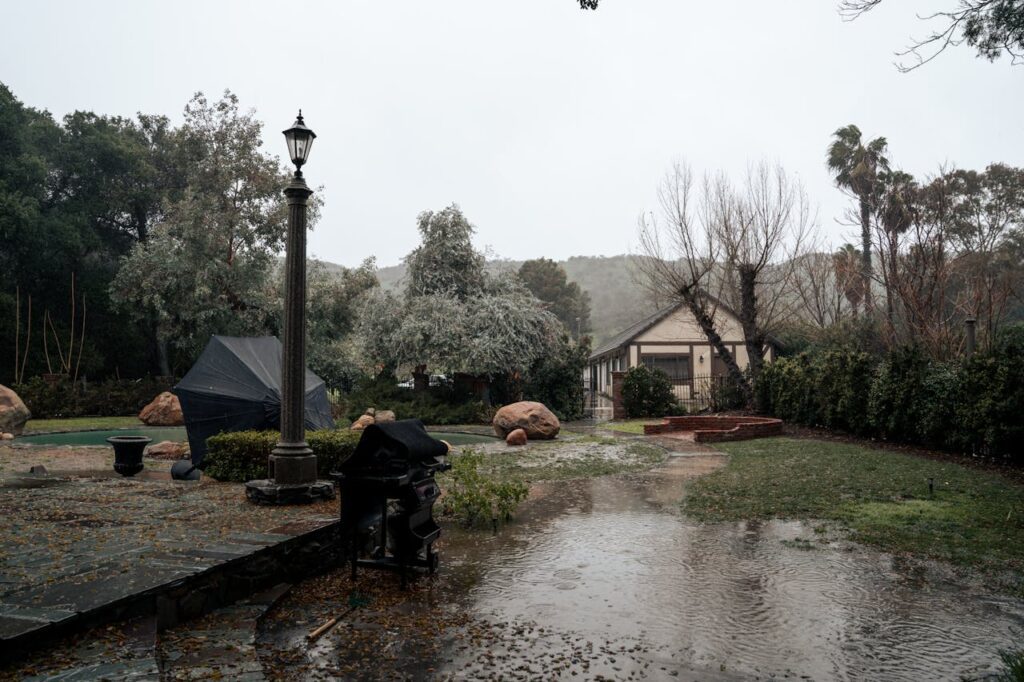
Figuring out how to stop backyard flooding is a big struggle that many Pacific Northwest homeowners face. Seattle gets an estimated 37 inches of rainfall each year, so if your backyard has poor drainage, then flooding can become a serious problem. If you are looking for tips on how to prevent flooding in your backyard, continue reading or get in touch with New Life Rockeries today to see how our landscape professionals can help you with your flooding backyard issue. 5 Backyard Flooding Solutions Here at New Life Rockeries, we are passionate about helping Pacific Northwest homeowners improve their outdoor landscapes through optimization and quality landscape care. Whether you want tips for how to fix your drainage issue yourself, or you’d like to enlist our team of landscapers to do it for you, feel free to contact New Life Rockeries today or keep reading to learn our top five solutions for how to fix a flooding backyard. Plant a Rain Garden Rain gardens can be incredibly useful both aesthetically and practically. Make sure that you install deep-rooted plants (tall grasses work well), that are accustomed to thriving in swampy environments. Redirect the Rainwater Another way to prevent backyard flooding is by redirecting the rainwater to go to another area in your yard. You can use large and small rocks to redirect the flow of the water to a rain barrel or small pond. Have a Landscape Company Install a Drainage System Sometimes, DIY drainage solutions aren’t as practical and instead you need a professional to come in and install a drainage system to redirect water and keep your backyard from becoming a swamp. If you find yourself in this position, get in touch with New Life Rockeries today Level Your Backyard If the reason your backyard is flooding is because it’s sloped, try and level out your yard to reduce the flooding. If you don’t feel comfortable leveling your backyard on your own, one of New Life Rockeries’ landscaping professionals would be happy to help. Install a Rain Barrel A rain barrel might sit at the end of a downspout in order to catch the water and prevent it from flooding your backyard landscape. If you’d like to inquire about our backyard flooding solutions, contact New Life Rockeries today. We’d be happy to discuss your landscaping needs and create a custom quote for your project. Find the Final Flooding Backyard Solutions If you are looking for the most convenient backyard flooding fix, get in touch with New Life Rockeries today. Our drain backyard flooding specialists can do a visual assessment of why your backyard is flooding and provide you with the best solution for your drainage issues. If you want the most stress-free drainage for backyard flooding solution, our landscaping professionals can help you. New Life Rockeries is passionate about helping homeowners improve their landscapes and the functionality of their backyards. Rather than endure another round of flooding and a soggy landscape, get the assistance of the landscaping contractor that you deserve by contacting New Life Rockeries today.
How To Build a Dry Stack Stone Wall
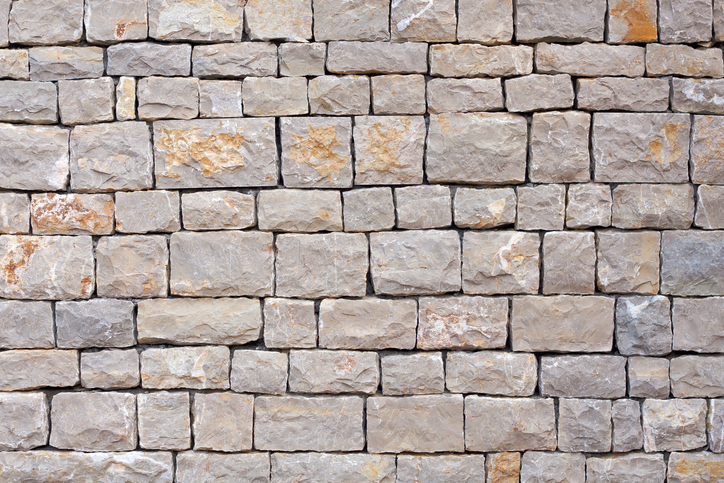
Dry stack stone walls are attractive, easy-to-build, landscape features that make a wonderful addition to residential and commercial properties. If you’re wondering how to build a dry stack stone wall, this blog post will teach you how to construct one and will also answer some of the frequently asked questions that our rock wall builders often hear. Continue reading to learn how to build a dry stack stone wall or give New Life Rockeries a call to request an estimate for having a retaining wall contractor build your wall for you. How To Build a Dry Stack Stone Wall: 6 Steps When it comes to how to build a stacked stone wall, our retaining wall experts have put together a simple, six-step tutorial for building your very own dry stack stone wall. If you have any questions about the steps listed below or how to build a rock retaining wall, give our team at New Life Rockeries a call today. Choose your stone and gather the necessary tools and materials. Dig your trench (a stacked stone wall generally requires a trench that is between four and six inches deep, by two-feet wide). Shovel and tamp the dirt to create a solid foundation for your dry stack wall. Lay your foundational layer and continue to place layers on top of each other until your wall is the ideal height (most are between two and a half to three feet tall). Finish off your stacked rock retaining wall with a capstone, making sure that it’s level. Fill any gaps in the wall with smaller stones and voila! Your stacked stone retaining wall is complete. Tips For Building a Stackable Stone Retaining Wall Here are four tips for building a stackable stone retaining wall that lasts: Watch several YouTube tutorials about how to build a stacked rock wall prior to beginning your project. Make sure that you have all of the necessary tools and materials for constructing your dry stack retaining wall. Pick out your stone making sure that it is a durable material and one that resonates with your landscape style. Start your stacked rock wall construction and enjoy the project! Benefits Of Dry Stacked Retaining Walls If you’re currently considering having a dry stacked retaining wall installed at your property, here are three of the best benefits of dry stack stone walls. Extreme durability. Dry stacked retaining walls are extremely durable and weather resistant, making them one of the best outdoor walls for any climate. Easy to repair. Stacked rock walls are much easier to repair than retaining walls that are built with other materials. Repairs simply require removing damaged stone and restacking your wall with new stones to remedy any issues. Unbeatable aesthetics. Stacked rock walls are simple, beautiful, and rustic giving your home a vintage look that your neighbors will envy. Hire a Stacked Rock Wall Construction Company If you are considering having a stackable stone retaining wall installed at your property, get in touch with New Life Rockeries today. Here at New Life Rockeries, we’ve been in the business of beautifying Pacific Northwest landscapes for more than three decades. Our abundant experience enables us to create stacked stone retaining walls that reflect the aesthetic tastes of the homeowners we work for. To learn more about our stacked rock wall construction capabilities or to request an estimate for your retaining wall, give New Life Rockeries a call at (866) 881-7067 today.
What Are Retaining Wall Pins Used For?
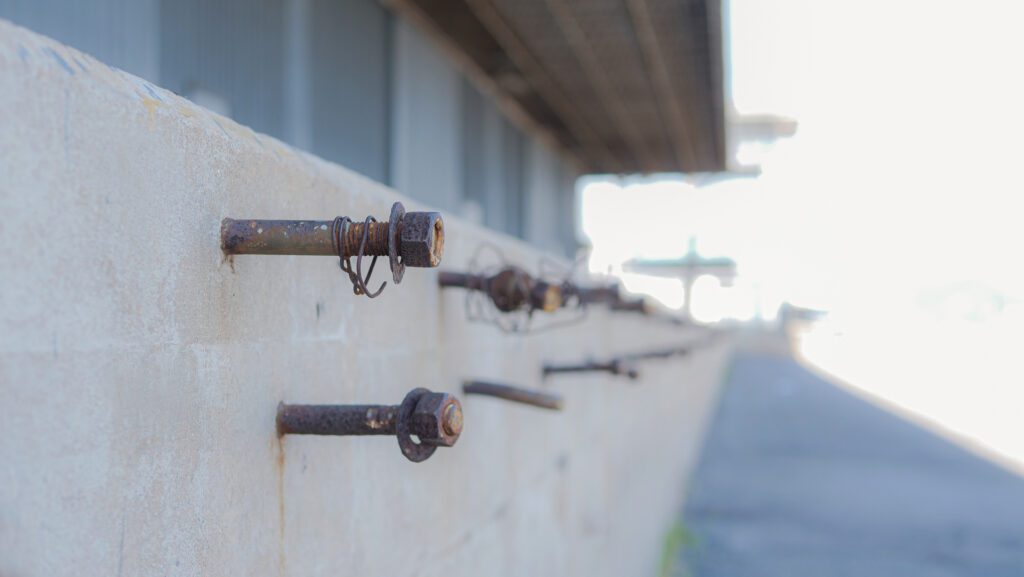
Retaining wall pins are integral to the strength and structural integrity of retaining walls. Unlike unmortared stone retaining walls that rely on gravity to remain sturdy, many kinds of block walls use retaining pins to keep the wall straight and strong. Continue reading to learn everything you need to know about retaining wall pins and what they’re used for. The insights in this blog post come from the expert retaining wall contractors here at New Life Rockeries. If you are considering having a retaining wall installed in your landscape, contact our team at (866) 752-1283. What Are Retaining Wall Pins Used For? Retaining wall pins are used to increase the strength of your block retaining wall and to help improve the alignment of your blocks during construction. There are a number of different types of retaining wall pins including straight pins, shouldered pins, alignment pins, and steel retaining wall pins. The kind of retaining wall pins you use will determine durability levels as well as which benefits are included. What Are Keystone Retaining Wall Pins? Keystone retaining wall pins are a brand of pins that enable you to have greater design flexibility, improved structural integrity, and save you time due to their simple installation. Keystone retaining wall pins are extremely resilient and resistant to the weather — making them ideal to use in retaining walls. What Are the Benefits Of Retaining Wall Pins? Are there benefits to using retaining wall pins over other retaining wall methods? Retaining wall pins offer a wide variety of advantages, including: Reinforcement and strengthening of your retaining wall. Pins are weather-proof, helping your wall withstand wet conditions. Retaining wall pins are simple to install, making the job easier for beginners. Improved wall appearance due to the reduction of unsightly corners and gaps. Ensures that your retaining wall is properly aligned and straight. If you are considering having a pin system retaining wall installed at your residence, one thing to keep in mind is that not all block retaining walls are compatible with pin systems, so always make sure that the block retaining wall you choose to have installed is compatible with a pin system before moving on to the installation process. Get In Touch With a Retaining Wall Contractor Today Whether your retaining wall is in need of a little makeover or you don’t yet have a retaining wall but would like to have one installed, get in touch with New Life Rockeries today. Here at New Life Rockeries, we’ve spent the last 30-years bringing beauty and life to Pacific Northwest landscapes. We offer retaining wall services and would be more than happy to offer you an estimate for how much your retaining wall installation will cost. All of our retaining walls are built with quality materials and quality techniques. We make retaining walls that improve the functionality and appearance of your landscape. To learn more about our retaining wall services or landscaping team, give New Life Rockeries a call at (866) 752-1283 or reach us using our online contact form here.
Retainer Wall Plants You Can Use
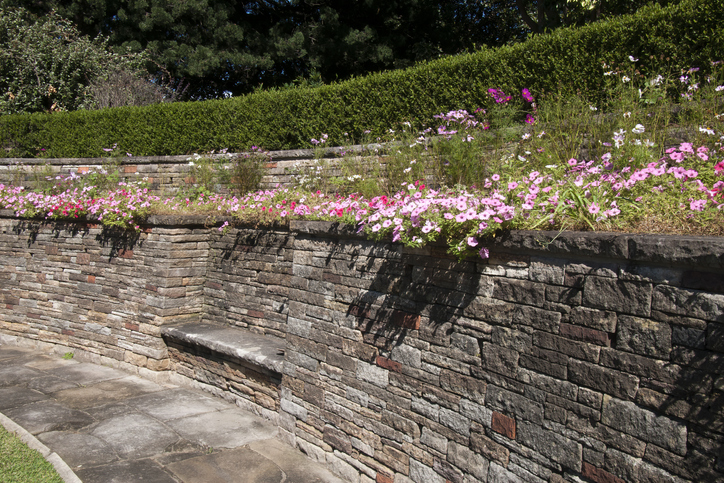
Retainer wall plants can completely transform your landscape and bring new vibrancy to your home’s outdoor aesthetic. If you’ve been considering livening up your outdoor space by doing some retaining wall planting, this article will help you know the best retaining wall plants that you can use to make your retaining wall pop. If you like the idea of plants for stone walls but don’t have the time to do the planting yourself, get in touch with New Life Rockeries today. Our team of skilled retaining wall professionals would be happy to help you with the design and planting of your retaining wall flower bed. Continue reading to learn more about the best plants for retaining walls or give New Life Rockeries a call at (866) 881-7067 to speak with one of our retaining wall professionals. Retaining Wall Flower Bed Ideas Retaining wall flower beds are a useful way to bring color to your earthy-toned retaining wall or make it stand out as a highlight in your landscape. Two retaining wall plant designs that our rockery professionals often install include: Cascading plants. Cascading plants for retaining walls lend your landscape a magical, woodland vibe that is difficult to beat. Some of the best plants to cover retaining walls include Clematis, Lobelia, Virginia Creeper, and Wave Petunias. Having plants on the top of retaining walls gives your entire landscape a more wild, natural look that is very aesthetically appealing. Retaining wall flower bed pockets. Another trendy design for plants for a retaining wall is plant pockets. You can use succulents or other plants to fill in the gaps between the stones in your wall. These flower bed pockets create an artistic and beautifully natural look for your entire landscape. Ideal Plants For Rock Walls What are the ideal plants for retaining walls? Which plants are ideal depends on your soil, the climate you’re living in, and the amount of shade or sunshine your landscape typically receives. In general, some of the best plants for rock walls include: Diamond Frost Artemisia Silver Chiffon Blue Lobelia Creeping Jenny Blue Crown Bluebird Nemesia When selecting the ideal plants for your wall, keep in mind that you want plants that will not only enhance the wall’s beauty but will also help prevent erosion. Retaining Wall Plants Landscaping Services Here at New Life Rockeries, we’ve spent the past three decades mastering the art of retaining wall creation and landscape design. Our landscaping contractor thrives at designing practical, aesthetically pleasing retaining walls that last. Whether you already have a retaining wall in your landscape, want to have one installed, or you just want tips on how to create a retaining wall flower bed that suits your landscape, get in touch with New Life Rockeries. Our team of retaining wall professionals would be more than happy to discuss your landscaping needs and desires so that we can help you create the landscape of your dreams. Give New Life Rockeries a call at (866) 881-7067 to speak with one of our retaining wall contractors today or to request an estimate for your project.
Retaining Wall Cracks and What You Should Know
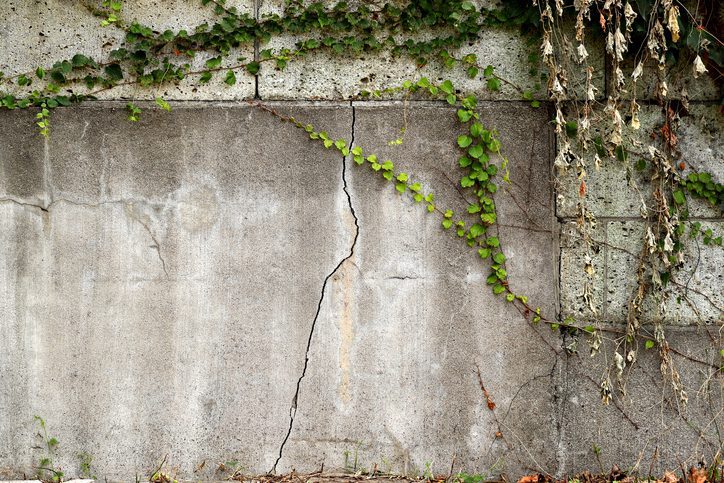
Dealing with retaining wall cracks and cracks in concrete walls can be a huge frustration as they pose a risk to your landscape and can be difficult to repair. Retaining walls are usually built to stop soil erosion or improve drainage in your landscape, so when they don’t work your entire landscape can be put at risk. If you’ve started noticing retaining wall cracks that are causing issues in your landscape, the fastest way to mitigate this risk is to get in touch with a retaining wall contractor and schedule an appointment to have your wall inspected. Here at New Life Rockeries, we have been helping homeowners improve their landscapes for more than 30 years. We have experience building and repairing retaining walls and our team would be happy to visit your home and help you with your retaining wall issues. Continue reading to learn how to identify and repair retaining wall cracks or Give New Life Rockeries a call at (866) 757-7318 to schedule a visit from one of our retaining wall specialists. How Retaining Wall Cracks Happen So what are some retaining wall cracks causes? A cracked stone wall can result for many reasons, here are the top five: Improper or inadequate drainage. Insufficient weep holes are often the culprit. Pressure building up behind your retaining wall due to wet soil. Poorly designed retaining walls. “Slope creep” causing the soil beneath your retaining wall to shift. Harsh weather. Over time, the elements will begin to take their toll on your retaining wall, causing cracks and other damage. These are five common reasons why you might be noticing vertical cracks in concrete retaining walls. If you’re unsure why your retaining wall is developing cracks and would like to have it inspected by a retaining wall contractor, get in touch with New Life Rockeries today. Cracked Wall Repair Tips So what do you do if you are dealing with a cracked concrete wall or damaged stone retaining wall? Here are five cracked wall repair tips: Monitor your retaining wall cracks. Check your retaining wall daily to ensure that it isn’t starting to lean more. Check on your drainage. One of the main causes of a broken concrete retaining wall is poor drainage, so make sure that you improve drainage around your wall to mitigate the likelihood of it leaning. Reinforce the retaining wall to make it stronger and prevent future leaning. Add weep holes to improve drainage. Contact a retaining wall contractor. If you are unable to prevent your retaining wall from further cracking, get in touch with a retaining wall contractor who will help you improve drainage and repair your retaining wall. Need Help Fixing Your Retaining Wall Cracks? If you’re dealing with a cracked cement wall and you’re looking for a reliable, effective solution, get in touch with New Life Rockeries today. Here at New Life Rockeries, we have more than three decades of experience working with retaining walls and retaining wall repairs. If you’d like to learn more about our retaining wall services or schedule our team to inspect your retaining wall, give us a call at (866) 757-7318 today.
How to Pour a Concrete Retaining Wall
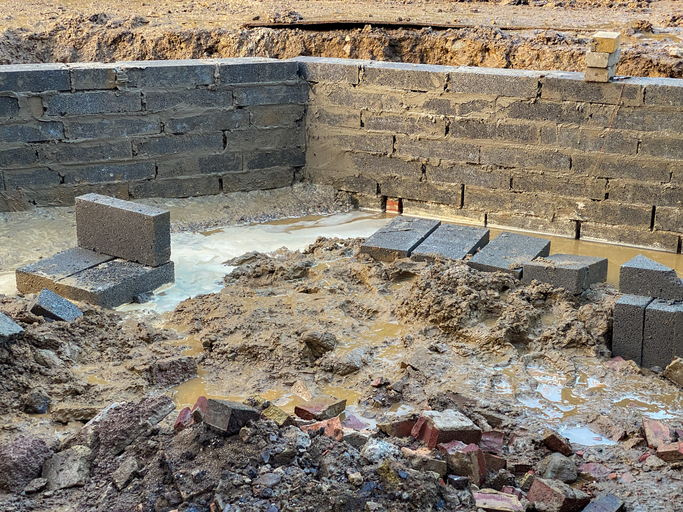
Concrete retaining walls are a simple, aesthetically pleasing addition to any landscape. Due to their muted shades, they are able to match any landscape style and are one of the sturdiest retaining wall options. If you are wondering how to form and pour a concrete retaining wall, continue reading or give New Life Rockeries a call to speak with our expert retaining wall contractors. How to Pour a Concrete Retaining Wall Here are five steps for how to pour a concrete retaining wall. If you have any questions about how to prepare your site for pouring a concrete retaining wall or how to pour a sturdier concrete retaining wall, give New Life Rockeries a call. Before we get into the how-to section of pouring a concrete retaining wall, let’s first take a look at the tools you will need to do it. Tools Needed to Pour a Concrete Retaining Wall Shovel Tamper Concrete mixer Stakes Wooden planks Measuring tape Post driver Plan the Site – Prepare the site where you plan on pouring your concrete retaining wall by marking out where the footings will be and measuring the area to ensure that you’ve purchased enough concrete and retaining wall materials. Dig the Footing – If you’re wondering how to pour a concrete footing for a retaining wall, this is where it starts. Using your shovel, dig the footing to the correct depth (the depth of your footing is determined by the chosen height of your concrete retaining wall). Build the Forms – When it comes to building the forms, the width of your concrete retaining wall as well as where you dug the footings will determine how to build the forms. Drive stakes into the ground using your footings as a guide, then use the stakes to build your forms. Mix Your Concrete – Now comes the fun part of pouring a concrete retaining wall — mixing the concrete. Follow the directions detailed on the back of your cement bag to mix your concrete. Use a cement mixer to mix it thoroughly and then use your wheelbarrow to transfer your cement to the excavation site. Pour Your Concrete Retaining Wall – Pour your mixed concrete into the forms until they are filled with cement. Refer to the back of the cement bag to see how long you need to let the concrete dry for before removing the wooden forms (most cement will take about several days or even weeks to dry fully). Need Help Pouring Your Concrete Retaining Wall? We know that pouring a concrete retaining wall is a daunting task. If you want to eliminate the stress of pouring your own concrete retaining wall, work with a retaining wall contractor instead. While DIY projects can be fun, they can also add large amounts of unnecessary stress and work. Rather than spending your next few weekends gathering the necessary materials and figuring out how to pour a curved small concrete retaining wall, why not give New Life Rockeries a call? Here at New Life Rockeries we’ve been pouring concrete retaining walls and offering landscape services to homeowners for more than 35 years. Our team would be happy to help you design and pour a concrete retaining wall to make your landscape more practical and beautiful. To learn more about our retaining wall services, give New Life Rockeries a call today.
How to Backfill a Retaining Wall
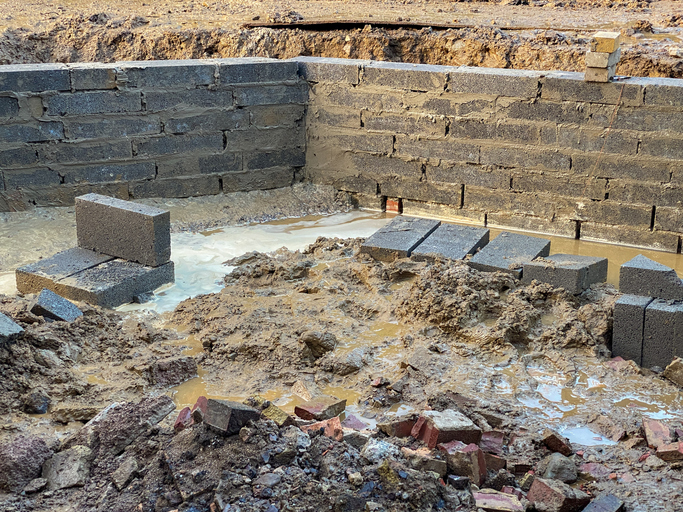
Backfill is the dirt and gravel behind your retaining wall that provides your wall with adequate drainage and water redirection. Backfill is a necessary feature of retaining walls because it ensures that there aren’t any drainage issues or water pooling behind your retaining wall. Poor drainage or inadequate backfill is one of the main reasons why retaining walls fail. This is why it is so important to have adequate backfill behind your retaining wall. If you want to learn more about how to backfill a retaining wall, continue reading or give New Life Rockeries a call today. How to Properly Backfill a Retaining Wall In order to build a reliable, drainage-optimized foundation for your retaining wall, you must ensure that your retaining wall has sufficient backfill. Below are the five steps for how to properly backfill a retaining wall, if you have any questions about the process, contact our retaining wall contractors team. Steps For How to Backfill a Retaining Wall Lay your base of compacted native soil (about three inches deep). Tamp the soil to ensure that it is secure and firm. Fill the next six to twelve inches with aggregate or gravel. Tamp the gravel or aggregate to ensure a sturdy base. Fill the remaining six or so inches with the compacted native soil to allow grass and plant growth around the base of your retaining wall. What Should You Use to Backfill a Retaining Wall? The best materials for backfill are native soil for the base and top, with gravel or aggregate forming the body of the backfill between the native soil. In addition to these materials, creating a backfill will also require the following tools: Shovel Gloves Protective eyewear Tamper How Important is it to Backfill a Retaining Wall? Adequate backfill is essential for ensuring that your retaining wall drains well as water cannot pass through most retaining walls. Poor drainage due to insufficient backfill could result in a warped retaining wall with unsightly bulges or cracks as well as a buildup of hydrostatic pressure that could lead to retaining wall failure. To ensure that your retaining wall stands the test of time, invest the time and energy necessary to install a proper backfill. If you don’t have time to create a backfill on your own, hire a retaining wall backfill company to install one for you. Need Help Backfilling Your Retaining Wall? Backfilling a retaining wall properly contributes a lot to the longevity and stability of your retaining wall. Failing to have a retaining wall backfilled properly is one of the main reasons that retaining walls fail. If you are in need of backfilling or fixing a retaining wall backfill, give New Life Rockeries a call today. Let our team of retaining wall experts take care of your backfilling needs so that you can feel confident in the integrity of your retaining wall. Our team of landscape professionals has been working with Washington homeowners for more than 35 years. We run a trusted landscaping service that takes pride in bringing beauty as well as practicality to every landscape.
Hiring A Retaining Wall Contractor: Ultimate Guide
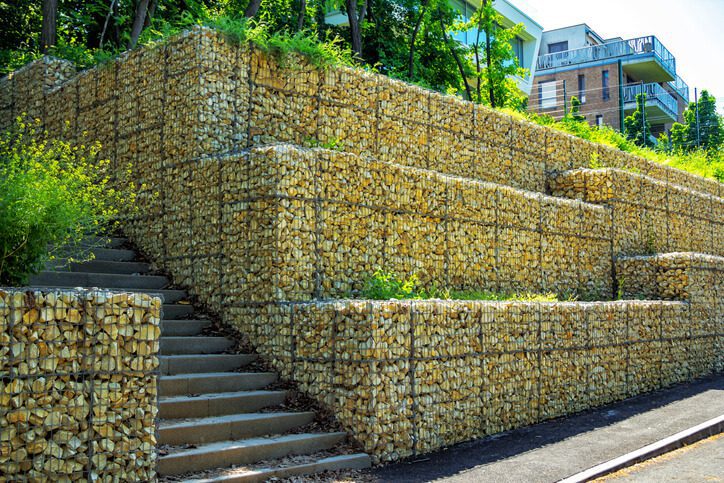
What is the best way to find a reliable retaining wall contractor? And what are the benefits of working with a contractor rather than simply doing the work yourself? If this is your first time hiring a block or concrete retaining wall contractor, continue reading to learn about the benefits of hiring a retaining wall contractor as well as things to consider before signing the contract. Benefits of Hiring Retaining Wall Contractors Here are some of the top benefits of working with a skilled retaining wall contractor: Retaining wall contractors have connections. They work with wholesale material providers and know where to get the highest quality rock for your project. Contractors get the best deals. Since retaining wall contractors work closely with wholesale material providers, they are able to get a better deal on materials than most homeowners would be able to get from the same wholesaler. Contractors do the job right. Retaining wall contractors are trained and experienced when it comes to building retaining walls. Working with a retaining wall contractor means that you can expect to see the best results from your project. Contractors build high-quality retaining walls. Hiring a retaining wall contractor means that you can have confidence in the quality and sturdiness of your retaining wall. Contractors save you the stress of having to build the retaining wall yourself. If retaining wall contracting isn’t your profession, it will be stressful to attempt to source all the materials and construct a retaining wall on your own. Rather than going through all of the stress and time needed to plan and build a retaining wall, hire a reliable contractor to do it for you. Things To Consider When Hiring a Retaining Wall Contractor Here is a list of things to consider when hiring a concrete or block retaining wall contractor: Insurance. Make sure that the retaining wall contractor you hire has appropriate insurance (and documentation to prove it). Price & Quality. Bear in mind that well-made retaining walls beat poorly made ones any day. If you are deciding between a cheaper contractor and a more expensive, reliable one, opt for the contractor that does the highest quality work. Contracts. Don’t just skim the contract when the retaining wall contractor sends it over. Read it thoroughly to ensure that your project has been described correctly. This will ensure that you end up with the retaining wall that you want. References. Only hire a retaining wall contractor that can provide you with reliable references. Look on the contractor’s website to see if they have a client review section and read what past clients have to say about their contracting services. How To Find Retaining Wall Contractors Near Me A common question that pops up when homeowners are searching for a contractor is, “how do I find a retaining wall contractor near me?” Here are three tips for finding the best retaining wall contractor near you: Do an online search. Google phrases like, “retaining wall contractor near me” or “retaining wall contractor in [city].” Ask around. If you have friends or neighbors who have hired a retaining wall contractor in the past, ask if they’d recommend the contractor they used. Speak with a contractor about your project. This will be the best way to get a feel for a specific contractor and see if working together is the right move. Contact a Reliable Retaining Wall Contractor Today If you are looking for a reliable, seasoned retaining wall contractor, give New Life Rockeries a call today. Our team of professional landscapers and retaining wall contractors has been bringing beauty to Washington landscapes for more than 35 years. We want to help you get the retaining wall and landscape that you’ve been dreaming of. To speak with our retaining wall contractors or to receive an estimate for your project, contact New Life Rockeries today.
How To Clean Flagstone The Right Way
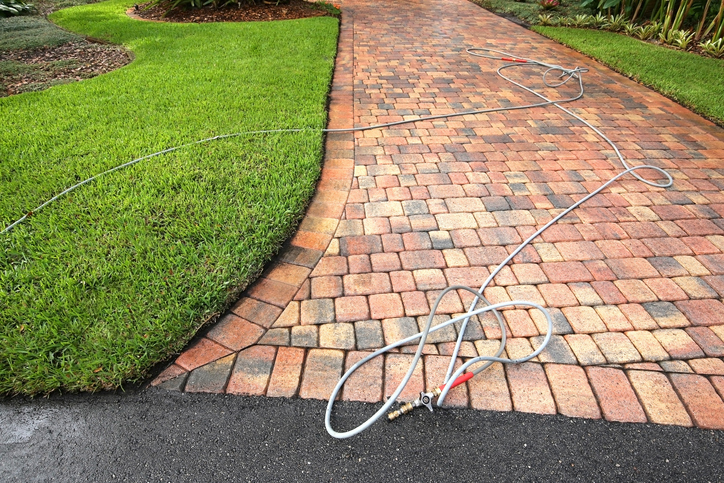
Flagstone pavers make popular floors, patios, fireplaces, and pool surrounds. When it comes to maintenance, however, many homeowners are unaware of the best ways to clean their flagstone pavers. If you are looking for an easy guide that explains how to clean your flagstone patio, fireplace, or other flagstone surfaces, continue reading or contact New Life Rockeries today for additional guidance. How To Clean Flagstone Patio Thankfully, flagstone patios aren’t very difficult to clean or maintain. With a few basic household items and half an hour of time to spare, your flagstone patio should be guest-ready. Here is our simple guide for how to clean your flagstone patio. If you’re wondering how to clean flagstone fireplace or pool pavers, the same method works for those surfaces as well. How To Clean Flagstone Pavers Here are the basic three tools you need to clean your flagstone patio: A bucket Scrub brush Dish soap Steps for cleaning your flagstone patio: Put a tablespoon or two of dish soap into your bucket. Fill your bucket with warm water — make sure that the soap has dissolved and is sudsy in the bucket. Dunk your scrub brush in your cleaning solution. Scrub your flagstones until you’ve done the entire patio. Tip: if there are stubborn stains on your flagstone patio, you can use ammonia mixed with water to clean them away. How To Clean Mold From Your Flagstone Patio or Pool Surround If you are dealing with mold growth on your flagstone patio, here are the tools you will need to get rid of it: Vinegar (white vinegar works best) Scrub brush Steps for how to clean mold from your flagstone patio: Cover your flagstone patio with white vinegar. Allow the vinegar to sit on the flagstones for a couple of minutes. Rinse the vinegar from your flagstone patio. Use your scrub brush to clean your flagstone patio. Tips For How To Clean Flagstone Floor & Other Flagstone Surfaces Here are three helpful tips for cleaning flagstone surfaces: Avoid harsh cleaners as they can damage your flagstone. Use ammonia safely, avoiding letting it touch your skin. Sweep your flagstone patio frequently. This will prevent leaves and other debris from staining your patio. Lastly, if you’d prefer not to do the flagstone cleaning yourself, hire a landscape maintenance company to do it for you . Rather than allowing an unmaintained patio to stress you out, hire a maintenance team to come clean it. Flagstone Maintenance & Installation Services Has the state of your flagstone patio been bothering you lately? If you are tired of the ill-maintained aesthetic your flagstone is emitting and you want a professional maintenance team to clean it up and get it into tip-top shape, give New Life Rockeries a call. Our landscape maintenance team has experience maintaining flagstone patios and we’d like to use our skills to bring beauty to your outdoor space. In addition to flagstone maintenance services, our team is able to install gorgeous flagstone patios as well. We’d be more than happy to discuss your project and create a customized quote for installing your flagstone patio — just give us a call to get started.
